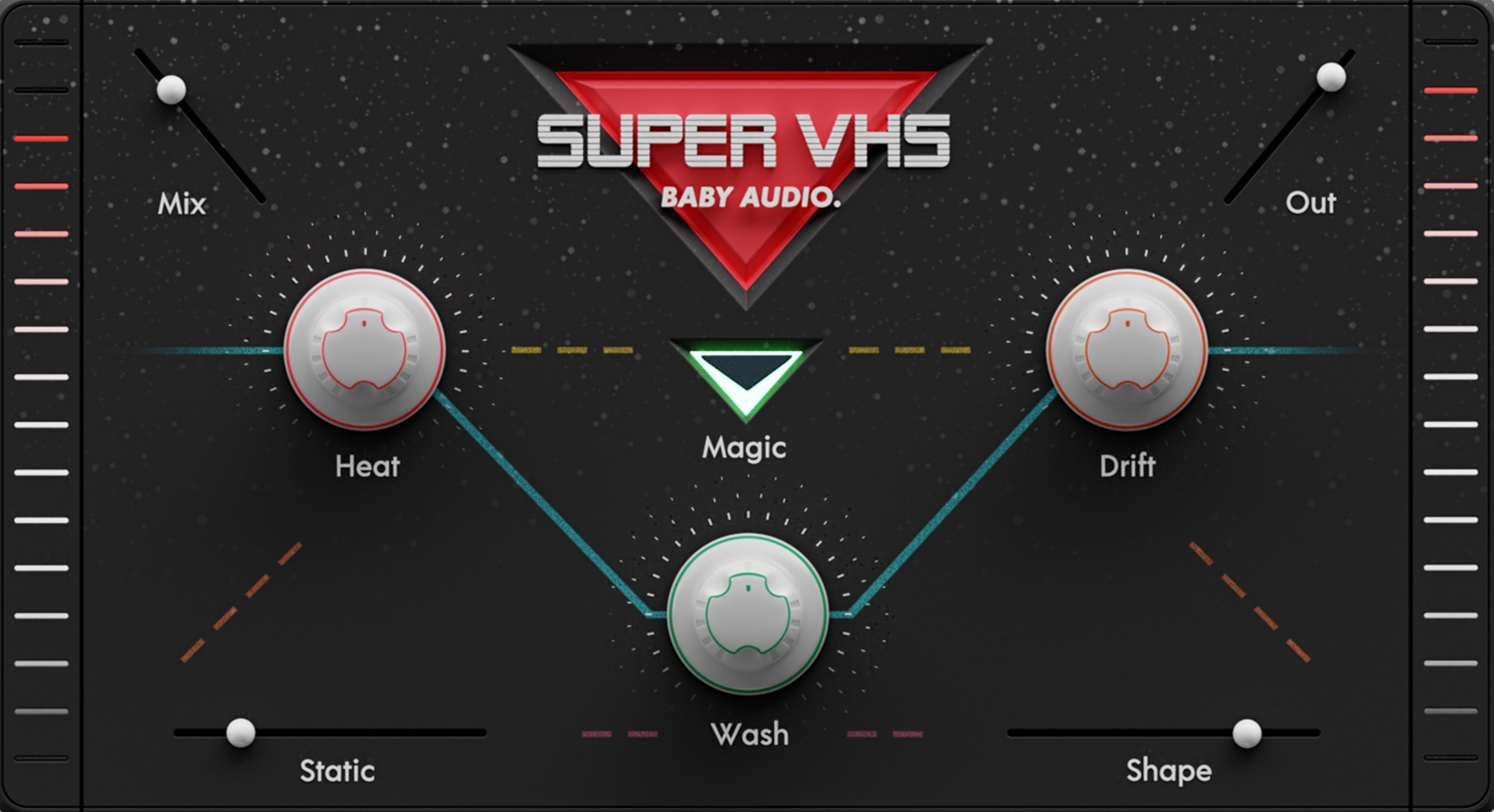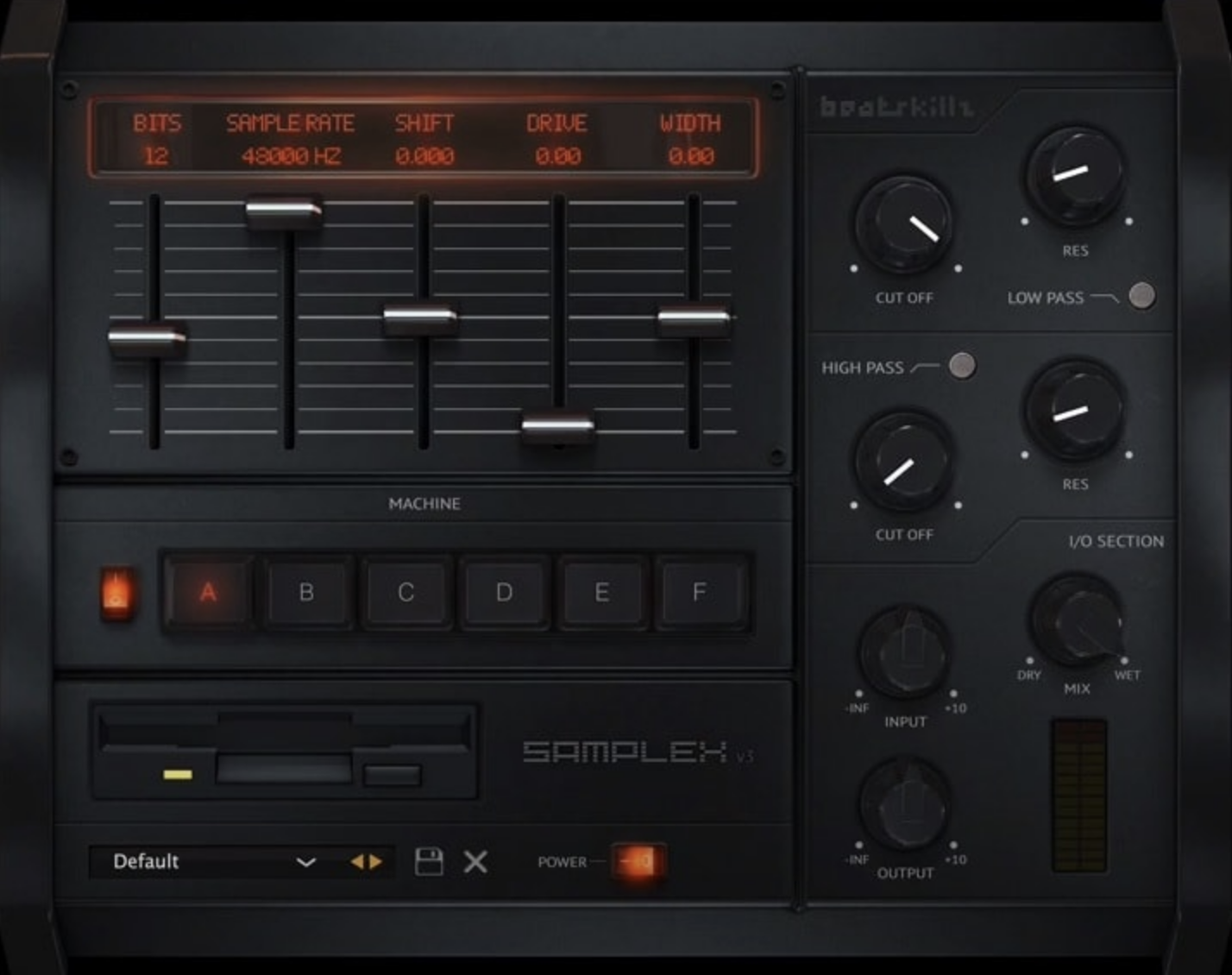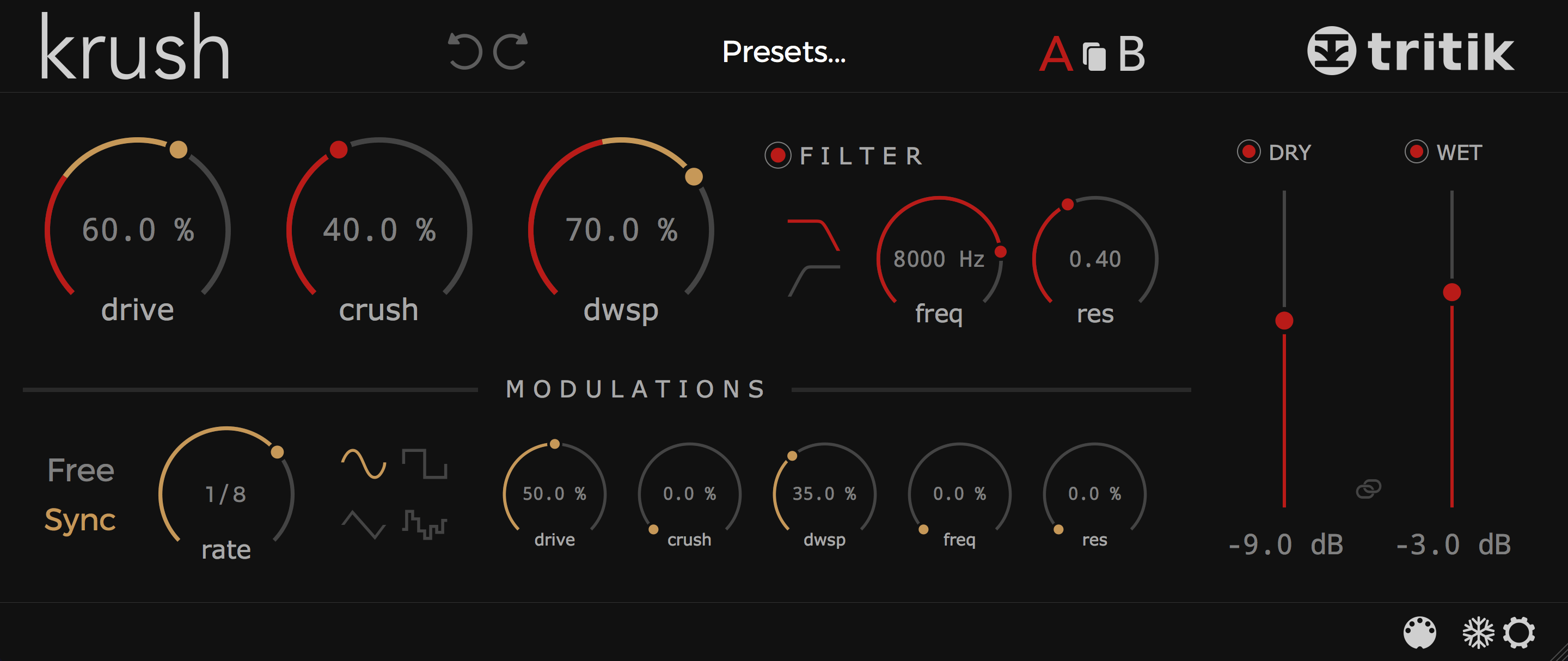I love me some good bitcrushing in my tracks, which is odd since bitcrushing is essentially reducing the quality of a sound.
Bitcrushing can be tricky to use, though, so in this article I'll breakdown what Bitcrushing is, and 7 creative ways you can use it in your productions.
What Is Bit Crushing?
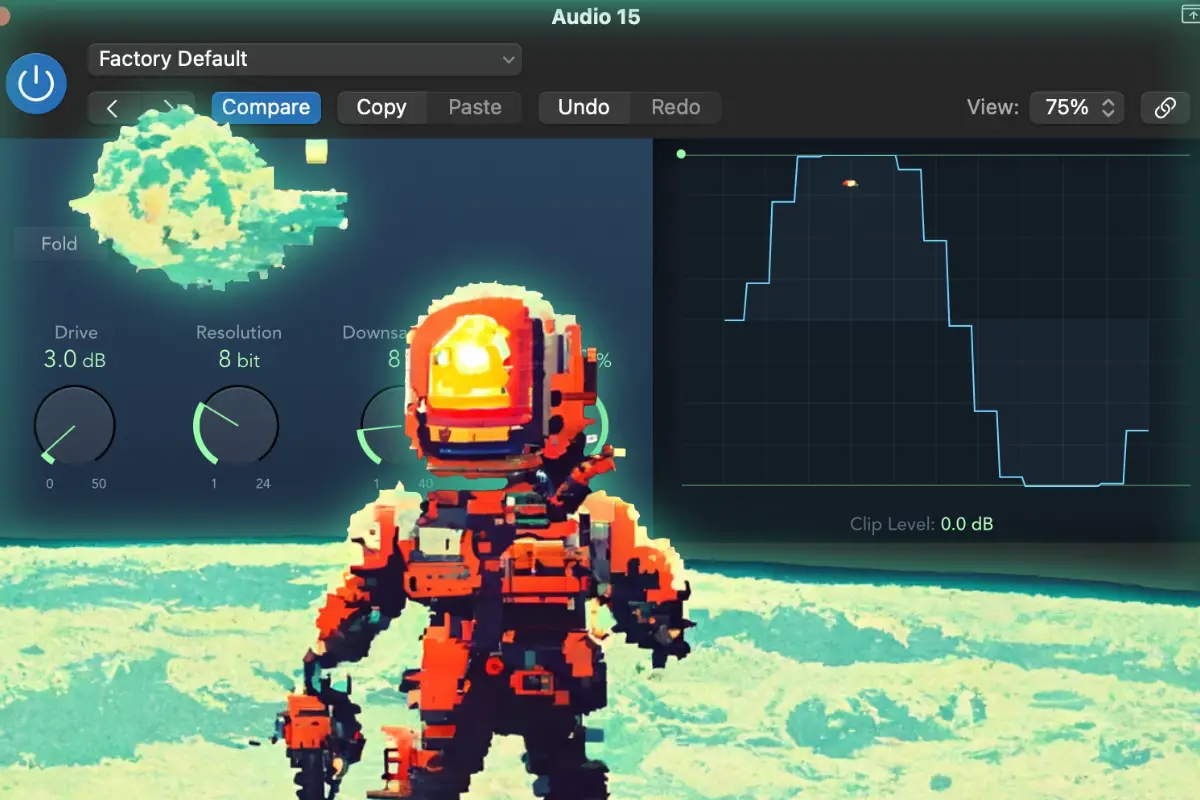
Bit crushing reduces the resolution of a sound.
Think of it like a video camera running at 30 frames a second. That means 30 images are captured and put together in sequence in just 1 second. The audio equivalent is sample rate, how often a sound is captured in a second.
Every time a video camera opens to take a picture, it needs resolution to determine what it can see, and how accurate it is is called resolution.
Same thing with sample rate, every time we open up our sample rate, we want to take an accurate picture.
In other words...
Digital audio is composed of a rapid series of numeric samples that encode audio data into a waveform. So the lower the sample rate, the less building blocks you have to assemble the audio picture, and therefore, the less accurate the sound is.
Think of trying to make a circle out of 4 dots. It's going to look more like a square than a circle.
However, if you have 24 dots, you can make something that looks very much like a circle.
But if we're intentionally reducing the resolution, that is bit crushing, and there are interesting sounds that can emerge when we do this
Setting Up A Bitcrusher
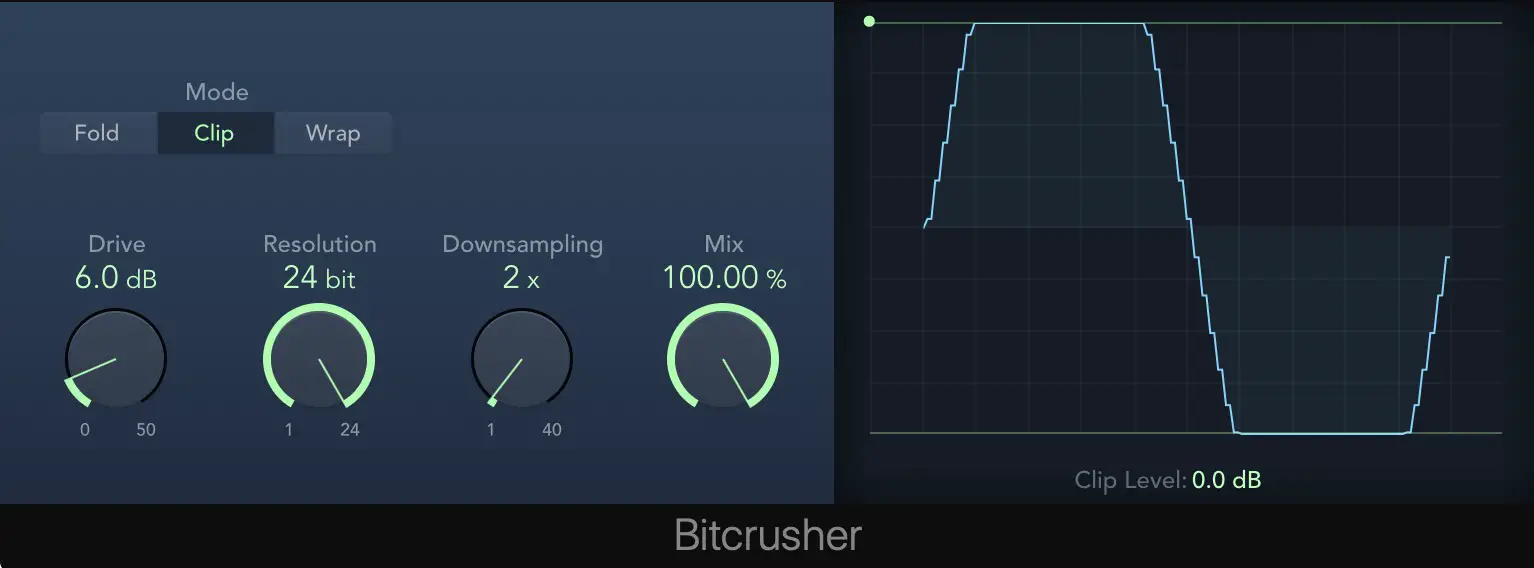
So how exactly do you use a Bitcrusher plugin?
Here's how you use the one in Logic Pro X, which is likely similar to what your DAW has if you don't have Logic.
Fold
Fold is a softer distortion setting, which is created by halving the level of the center portion of the signal above the threshold. The start and end levels of the clipped signal are unchanged.
Clip
Clip cuts off the top of your waveform. This will cause an abrupt distortion when the clipping threshold is exceeded, as the top of the waveform is simply cut off. Clipping that occurs in most digital systems is closest to Cut mode, which makes this the most authentic form of bitcrushing.
Wrap
Wrap is a less harsh form of distortion, which works by offsetting the start, mid, and end levels of the signal above the threshold. This parameter smooths signal levels when they cross the threshold.
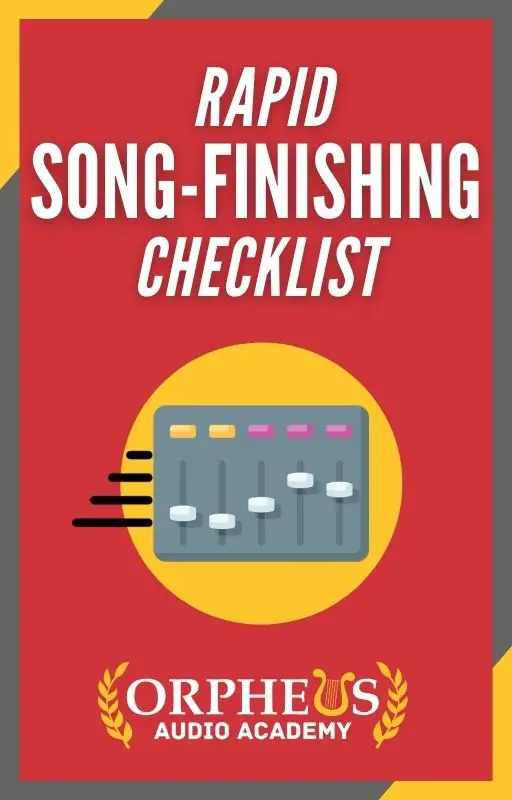
Create Better Songs, Faster
Click below to download my free song-finishing checklist to help you create radio-ready songs without taking months to complete them.
Drive
Sets the amount of gain applied to the input signal.
Raising the Drive level can also increase the amount of clipping at the output.
Resolution
Set the bit rate (between 1 and 24 bits) to alter the calculation precision of the process. Lower values increase the number of sampling errors, generating more distortion. At extremely low bit rates, the amount of distortion can be greater than the level of the usable signal.
- 16 bit = CD quality
- 8 bit = Retro video games
More you reduce, the less accurate the sound is being reproduced.
Downsampling
Downsampling reduces the sample rate. A value of 1x has no effect on the signal, a value of 2x halves the sample rate, and a value of 10x reduces the sample rate to one-tenth of the original. (For example, if you set Downsampling to 10x, a 44.1 kHz signal is sampled at just 4.41 kHz.)
Mix
Set the balance between the unaffected signal and the crushed signal.
Clip Level Threshold
Set the point (below the clipping threshold of the channel) at which the signal starts clipping. Drag the green dot at the top left, or the field, to set the clip level.
7 Creative Ways To Use Bitcrushing
Now that you know what all the controls do on a bitcrusher plugin, let's jump in to how exactly you can use this effect creatively in your music...
1.Snare Drum
Adding some subtle bitcrushing to your snare drums can add some sizzle and help them to cut through a mix.
I demonstrate how to add bitcrushing to a snare in my video above.
2. Leads
Automating in and out some bitcrushing on a lead can also be a really cool effect.
I used this on my track "Reboot", which you can hear below.
I all I did was automate the mix knob up and down during different sections of the lead melody.
3. Closed Hi-Hats
You use bitcrushing on your closed hi-hats to add variation. Done right, it can almost mimic the accents a drummer would create by occasionally easing up on the hi-hat pedal.
You can hear it in the song below:
4. Vocals
You can also add bitcrushing to vocals for a cool effect.
You can hear an example of this my track "Crystal Soda" below. I slowly automated the mix knob up so that the bitcrushing effect increases over the course of the verse.
5. Transitions
Transitions are a fantastic place to use bitcrushing to help you move between different sections of your song.
You can hear an example below from my song, "I Died Again".
6. Synths
Of course, you can also add bitcrushing to your synths to give them some added edginess.
7. Mix Bus
You've probably seen you can add bitcrushing to almost anything, and this includes your mix bus.
Daft Punk does this in a very interesting way in their song below.
Best Bitcrushing Plugins
If you're looking for some great bitcrushing plugins, here are some that I recommend.
Baby Audio Super VHS
Super VHS is an amazing all-in-one retro FX plugin that gives you saturation, chorus, pitch shifting, reverb, noise, and bitcrushing all in one handy tool.
I use this all the time in my mixes, and you can actually get it 10% off when you use my code "OAA" at check out.
BeatSkillz SampleX V3
SampleX models real vintage samplers to deliver a versitle sampler emulation plugin that allows you to control the sample rate, bitcrush, add in aliasing, and a whole lot more.
Tritik Krush - Free
If you're looking for a free bitcrushing plugin, then Tritik's free version of Krush is excellent.
Not only can you bitcrush, but you can actually modulate in your distortion according to different rates and frequencies.
Your DAW's Bitcrusher

If your DAW has a bitcrusher, it's probably good enough to get the job done.
I really love Logic Pro X's built-in Bitcrusher plugin.
Finish More Radio-Worthy Songs, Faster!
Bitcrushing and adding distortion to your mixes is awesome, but it is just one piece of the puzzle when it comes to producing pro-quality songs.
If you want a proven step-by-step formula for mixing radio-worthy tracks from start-to-finish...
Create Pro-Mixes, Faster
Click below to download my free song-finishing checklist to help you create radio-ready songs without taking months to complete them.
This checklist will walk you through a proven step-by-step mixing and mastering process so that you don't ever have to guess or wonder what to do next.
You'll know exactly what to do, and when, so you can quickly mix, master, and finish more tracks.
I hope you found this post valuable on how to get vocals to sit upfront in the mix helpful.
If so, feel free to share, and let me know in the comments below…

